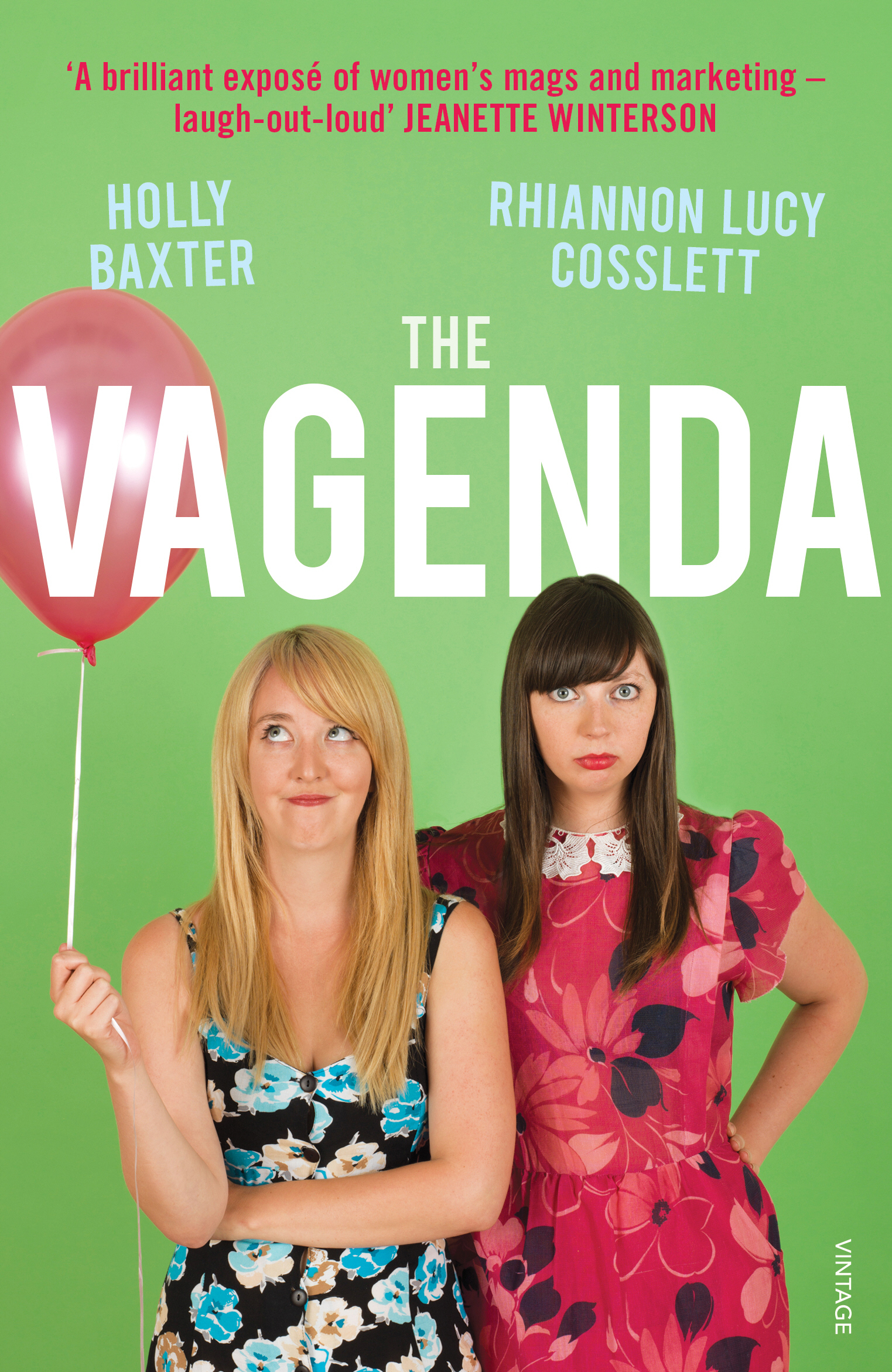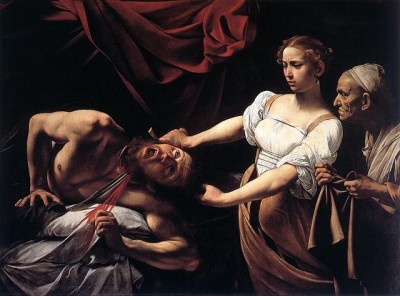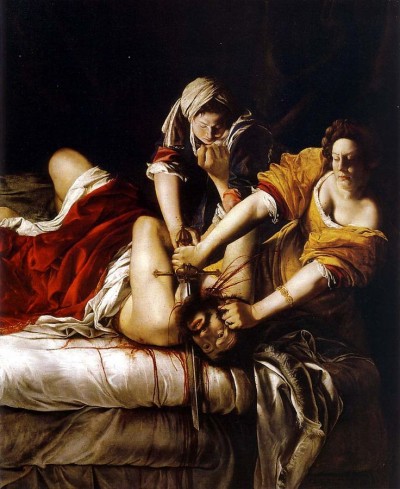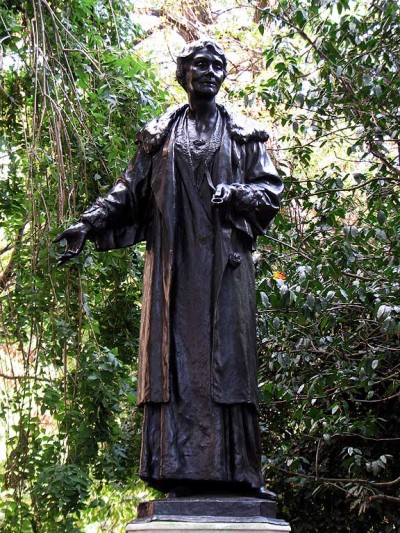In 1167 a sixty-five year old woman died in Rouen. She left behind a son on the English throne – which she had been instrumental in securing for him – and in so doing established the Plantagenet house that would rule England for nearly three hundred years. She would also remain for another four hundred years the first and only woman to be Queen of England in her own right. Among her long list of bad-ass accomplishments she once escaped a siege by dressing in a white cape and simply walking out through the snow and the hundreds of troops surrounding her castle. Her name was Empress Matilda; Queen, astute politician, opinionated and intelligent – but her epitaph at Rouen Cathedral? “Great by Birth, Greater by Marriage, Greatest in her Offspring: Here lies Matilda, the daughter, wife, and mother of Henry” – effectively eliminating her personal history and leaving her simply a daughter, wife and mother. But as it goes, she’s actually lucky to have a memorial at all.
The streets of London to me are a candy shop of place names, patchwork architecture, secret and wonderful archives and the ability to people-watch on such a magnificent scale it is almost overwhelming. But a few years ago I began to get peeved at the lack of celebrated women depicted in the city. It started with Emmeline Pankhurst. Now, Emmeline does actually have a statue. It’s a fairly nice one, she looks pretty good, it says nice stuff and it is in an attractive park. But there starts my issue with it. For any who haven’t seen it, the statue of Emmeline Pankhurst is in the park at the end of The Houses of Parliament, largely inconspicuous and surrounded by greenery. As I said, it is nice enough – but it is basically hidden. Her daughters, both pioneering politicians and feminists, have little plaques at her feet.
So who gets the honour of being proudly erected actually in front of Parliament? If one of the women responsible for securing the vote for the female population gets only a foot note, who gets front page? That’d be Richard Coeur de Lion and Oliver Cromwell. I actually think I could be reconciled to Emmeline’s terrible position if these two didn’t get such a prominent one. Starting with Richard; he spent very little time actually residing in England. He also spent huge amounts of England’s wealth on largely fruitless and morally questionable crusades, on one of which he managed to get himself captured and poor old England paid vast amounts of money in ransom to have him returned safely. Something paid for in taxes, naturally. Sure he was gallant and handsome – but worthy, over so many others, of such a giant statue? No.
Then there’s Oliver Cromwell, which I will accept makes some sense positioned as it is in front of the Houses of Parliament. I am pretty pro the UK as a republic, it is a real shame we were the first enlightened European country to dispose of our monarchy only to invite them back eleven years later. That being said I’m still not team Cromwell. On a petty level, he was a grumpy puritan bastard that outlawed theatres and destroyed a lot of beautiful historic things. But all of this rather trivial stuff aside Cromwell is quite possibly responsible for quite significant mass genocide and ethnic cleansing in Ireland. At the least, a questionable, possibly murky choice of hero.
Another feminist pioneer, Emily Davison, did manage to get a plaque actually inside the House of Commons, affixed in a cupboard she once hid in (during the 1911 Census, so her address could be recorded as the commons – genius), put there by Tony Benn MP. He said in the commons in 2001:
‘I have put up several plaques—quite illegally, without permission; I screwed them up myself. One was in the broom cupboard to commemorate Emily Wilding Davison, and another celebrated the people who fought for democracy and those who run the House. If one walks around this place, one sees statues of people, not one of whom believed in democracy, votes for women or anything else. We have to be sure that we are a workshop and not a museum.’
I like this plaque a lot, it is a real nod to Emily’s vibrant and persistent character – as well as a touching memorandum to the excellence of Tony Benn. His quote is also admirable and incredibly relevant. But surely this shouldn’t be all Emily Davison gets? An unofficial nod in an old cupboard.
Continuing up Whitehall towards Trafalgar Square there are no women to be recognised in this important central tourist area. Whitehall itself is completely littered with men, some of whom equally questionable. The only nudge to the fairer sex we get on Whitehall is Monument to the Women of WWII by John W. Mills just north of The Cenotaph. This memorial was unveiled in 2005 after a successful campaign. The memorial itself is pretty big and it’s nice it exists – but to me a rack of empty clothes just ends up being one more way of going ‘yeah women were involved, thanks women’ No individual notices. No names. No faces. No specific achievements.
And that’s it until we reach Trafalgar Square. Obviously, Trafalgar Square is a roaring, testicle filled platform for militaristic buffoons and King’s. We even have a giant male chicken taking preference over any female humans and almost certainly only there so that people can make cock jokes much to Boris Johnson’s glee. The Fourth Plinth as a display for temporary artworks is a wonderfully vibrant and British use for the space. It even yielded us the phenomenal statue of Alison Lapper by Marc Quinn for two spectacular years. But that’s been it for the women-folk. Other than that the only women in Trafalgar square are wet and have their tits out while cavorting with dolphins.
Having a hunt around to find anybody else with a vagina in central London I came across Edith Cavell off to the side by the entrance to The National Portrait Gallery. Edith Cavell was fierce, selfless and brave. Her statue has her dwarfed by Imperialist Jargon. The other statues of women I have personally come across include Boadicea, Florence Nightingale and Louisa Blake. According to internet research there total 14 open-air statues of women currently in London. Of those 14, three were Queens. There’s an indoor one of Margaret Thatcher and one of Elizabeth Fry (in the Old Bailey).
If we want to take it a step further we don’t even just have to talk about women who ‘did stuff’. How about the 10,000+ women buried in Southwark in an unmarked grave? Cross Bones Cemetery is essentially a mass grave for prostitutes and paupers used for hundreds of years to namelessly dispose of the discarded bodies of women (and some men) not allowed to be buried in consecrated church ground. It is incredibly sad. Re-discovered in the nineties it remains nondescript behind a gate while TFL try desperately to secure the right to build on it. These women are remembered not by anything official but by hundreds of people who visit and adorn the gate with ribbons and remembrances and conduct services for the outcast dead. This as a memorial is organic and heartfelt and I’m not suggesting we alter it – I just can’t help having a sneaking suspicion that if the gender of these ten thousand bodies had been male that there’d have been national out-cry at leaving them abandoned in an unmarked mass grave.
I’ve focussed on London because I know it well as a city. But I’m going to hazard a guess it isn’t a unique thing. Last year the city of Manchester conducted a successful campaign to redress the imbalance of statues in their city. They only had one female, Queen Victoria, despite a wealth of excellent Manc women – including the aforementioned Emmeline Pankhurst. Norwich does have one for Edith Cavell (and a pub, woo!) and I know Dublin has Molly Malone, though, I’m not even going to get started on what I think of that one (google it and weep).
Overall, our memorials to women in the UK are lacking, and when they do turn up they are largely terrible. Allow me to introduce the biblical figure of Judith; a young widow who seduced the general of an invading army, Holofernes, got herself into his tent and then cut his head off when he passed out drunk. The reason I bring her up is not what she did but to highlight another point about women and their place in history. The hundreds of years’ worth of depictions of Judith in art could be an essay on its own. There is clearly something fascinating about a femme-fatale, sexy assassin who is also pure and good. Her depictions spin on a wheel of confusion portraying her from fully-dressed saint to confused maid, leg poking out of her skirt, breasts bursting free. Take a look at these two painting of Judith. The composition is similar and they are essentially contemporary:
One is painted by a man and is much renowned, one is painted by a women and only recently beginning to get the recognition it deserves. Can you guess which way round they go? A determined steely faced Judith with strong arms versus a nymph like little maiden and her pious unwilling-to-murder face. They’re equally competent paintings so I think it is fairly obvious why one was lauded by the establishment and one largely ignored. The first one is painted by the great Caravaggio, the other by Artemisia Gentileschi.
What this painting has in common with Edith, with Matilda and with Emmeline is the subtle muting of powerful and ferocious femininity. Judith cannot relish the murder of a man who threatened her people, she couldn’t be strong and also flawed. She was chaste, neat and reluctant, acting out of duty, not passion. The fierce, arrogant Empress Matilda became a daughter, wife and mother. The brave Edith Cavell a symbol of humanity, humble under an allegorical Britannia. Incorrigible Emmeline Pankhurst a Parliamentary footnote.
So overall, what impression are we supposed to have of our women with this tour around London? That there weren’t many. That we have a few Queens. That our only famous women towed the line. Bollocks. The UK has one hell of a history of bad ass women. It is a myth that women don’t pop up in history very much. Sure they don’t have as many leading roles as men but considering this the vast amount of amazing, talented, and downright attention seeking women spanning thousands of years is immense. They are everywhere. Their biggest problem is that they can very quickly – and quite deliberately – be forgotten. Many of our most thoroughly over studied topics are full of them. The War of the Roses, for example, has smart, stubborn and influential women up to its eyeballs. But how many can we name? Probably just ‘that one that married one of the Henry’s at the end and united the two sides’, if that. How many had even heard of Queen Matilda before? More people should certainly be fans of Artemisia’s wonderful, evocative paintings and her brave and defiant attempt to bring her rapist to court in the seventeenth century.
We are getting better at it – excellent women, like Ada Lovelace, are starting to get the recognition people tried to bury. Campaigns, from Caroline Criado Perez to keep a woman on the banknotes to Malala Yousafzai refusing to be silenced, are increasing month by month. Alongside this, historians continue to take on the challenge of setting things straight. I can’t help thinking of Grace Dent a few years ago gleefully noting an awkward male historian ‘lamenting possibly a gentler time when David Starkey would pitch up whiffing of mothballs and misogyny to whitewash women from time’ after being confronted by the wonderful Dr Lucy Worsley quizzing him about Samuel Pepys having an ‘emission’ (Pepys jizzed in his pants. Yes really).
But there is also that second part of the problem. Historically when women do manage to make the front pages they get whitewashed into submissive mundanity. Like I said, we’ve been working on it – but we can do so much better. I don’t think it is a coincidence that all the statues of women we have managed to muster-up date at the very latest early twentieth century. There’s something a bit more comfortable about these women, muted by time, still relatively humble and feminine.
So, my solution? First of all: challenge this lack of glorified women. Let’s campaign for some more. Let’s make some statues ourselves – let’s hang signs on all the boring men asking where the ladies are. I can think of a hundred women more deserving of that plinth in Trafalgar Square. If you do know of a statue or a memorial of a woman, publicise it, share it – take a photo of yourself there and let’s start a map of ace women we can all pilgrimage to. Secondly, let’s all take a little while to learn about these women and actually paint a picture of their lives that goes further than their duty or their image. The stories are there. They are in our archives, our galleries, our libraries and our streets. Women are part of our history and our future and we should have them comfortably established as part of the canon – not thrown out as tokens here and there. If we want to keep on moving forward with a world that is equal, fair and lady friendly, let’s get a little bit better at portraying it that way.
-Eleanor Dickens






This article is a must read, It’s brilliant, witty and historically on the button !
This kind of splendid work will be the only way to address centuries of overlooked women and educate us all in the future, us men in very particular.
You don’t need to be a feminist or a woman to get it, just try equality and fairness for starters!! More of the same pleeeze.
Dublin recently got the Rosie Hackett Bridge, named after a trade unionist, revolutionary and all-round badass. It’s not a particularly beautiful bridge, but there was fierce competition over the naming, and Rosie beat the four men who were also in the running, including Bram Stoker.
We also have a bust of Countess Constance Markievicz in our most central park, and a full statue of her on another relatively central (though not heavily trafficked) street. She was a revolutionary leader, suffragette and socialist who was instrumental in the fight for Irish independence.
Apart from that, there is very little public art depicting women in Dublin.
Just googled the Rosie Hackett Bridge. Very glad to see it!
Hear hear! particularly like the suggestion of hanging signs on the male statues asking where the statues of women are. Perhaps also some signs pointing out what those heroes of empire really were: murderers, slavers, misogynists, racists, white supremacists, bullies, petty thugs, stealers of other people’s lands and wealth…the list goes on. All the statutes of men like that ought to be taken down, the way the statutes of dictators were pulled down after the Berlin wall came down.
In general i agree with your piece, but do need to call you out on one thing. You complain about women being sidelined, but spectacularly fail to mention that the big blue cock is by a WOMAN! (I’m biaised as I love the piece, also worth checking out is the mosaic floor in the entrance of the National Gallery which shows Virginia Woolf amongst others)
(I’m biaised as I love the piece, also worth checking out is the mosaic floor in the entrance of the National Gallery which shows Virginia Woolf amongst others)
What a great article! Where I work, beside Parliament in Wellington, New Zealand, they recently replaced the pedestrian crossing green men with Kate Sheppard, a pioneering suffragette http://wellington.govt.nz/your-council/projects/green-woman-pedestrain-traffic-lanterns It’s an awesome daily reminder of woman leadership.
Such a fantastic article! I’ve never given this much thought but thinking back on all the statues I’ve seen during the walking tours I’ve done around various cities across the world, you’re absolutely right, where on earth have the women been?
I think your point about the painting is great too, a quick scan of art galleries around Europe and – although penises and vaginas are everywhere – females are so much more frequently painted naked than men are. Why does history so often immortalise women as beautiful and naked, and men as complex and powerful?
I googled the Molly Malone statue.. why does she have cleavage?
Thanks for mentioning Cross Bones. Some of the women buried there were known as Winchester Geese and were prostitutes pimped, sorry “licensed”, by the Bishops of Winchester whose palace was nearby. They were churchmen who profited from their degradation; the women were not allowed to be buried in consecrated ground. http://www.crossbones.org.uk/
Cross Bones is one of my favourite places. The memorial there is incredibly moving.
So true – am continually finding that some of the most important early discoveries in my field (plant biology) were made by women that I’ve never heard of! Are you watching Amanda Vickery’s series at the moment (Suffragettes Forever – On iPlayer) – excellent, and some fascinating examples of exactly this problem – the section on women only being able to observe the Houses of Parliament through the ventilation grill in the ceiling (episode one) as so telling ……
Not quite plants but this book, Rebel Heiress, http://www.amazon.co.uk/Rebel-Heiress-Fiona-Mountain/dp/1848091656 deals with a lady, Eleanor Glanville, who made absolutely huge leaps and bounds in entomology despite being written off as ‘insane’ for her intellect and interest. This is a fictional account but still fascinating.
I know there’s a great Agatha Christie statue around the Covent Garden area that I’ve seen but the fact I can only remember a select few females in statue form says a lot about how many there are!
I went to the Imperial War Museum a few months ago, and was pleased to see a gallery showcasing the work of female war artists.
I’d have been even more pleased if their work was displayed alongside that of the male war artists in a nonchalant type of way, because in our fair society it was no big deal. And if more of their works had been commissioned at the time.
Here’s a link: (I hope links are allowed)
http://www.iwm.org.uk/history/6-stunning-first-world-war-artworks-by-women-war-artists
Thank you for the link! Looks great!
This is great, thank you!
Thank you for writing this great article. I love the references to art history you make. It is interesting that increasingly we are starting to see feminist readings of the works of female artists. Typical that a lot of Gentileschi’s work has been attributed to her father (and other male contemporaries), such as her painting of Susanna and the Elders. Like you say, it is time women reclaimed their roles in history from the dusty textbooks written predominantly by men.
Kind of nitpicky, but there is a famous Boudicca (Boadicea) statue in London, yes? Certainly a better-known statue of a female than anything we have in Washington DC.
The Boadicea statue is pretty much the only female statue in London that I don’t think is a bit rubbish actually. She looks so wonderfully strong and fierce!
As crazy as it sounds for some “PEOPLE”, women were apart of History in good and bad just as men.Sadly most of them are missing from our schoolbooks.
as a proud feminist, i must attack one of the ideas here. Our history departments are proudly offering the ‘history of oppressed people x’ course in every possible way. Since the 1970s an undogmatic, brilliant feminist scene has lit quite a torch through academia, with stars like Natalie Zemon Davis leading the way. Yes, we need more public recognition of women, but we’re also living in a country where historical markers blame the Indians for everything. Point being, NO, not everything you know about history is wrong. The local history department is probably feminist. You all take too many literature classes.
I think this point is certainly true to an extent – but it sounds like you’re talking about higher education. Certainly by the time I got to university feminist topics were abundant. But earlier? Not for me. I was at high school just over ten years ago and we learnt nothing of the sort. It is all very well to talk about progression in academia (which is a brilliant thing) but it is too late for key development for young boys and girls, as well as being a fairly elite way of relying on such an education.
One of the best articles on here, fantastic
Really love this article: intelligent, thought-provoking and it actually taught me something new! There should be more of this on here
Awesome article, thank you
why are all the references here to suffragettes rather than suffragists? Can someone explain the linguistic politics of why one or the other?
Apart from that, much agreement!
Just to let you know, The Women’s Library at the LSE has created an i-phone app called ‘Women’s walks’ that is essentially a walking tour of some places of significance for women’s history in London. It’s not comprehensive by any means but certainly helps recover some of the unknown histories which we’d otherwise walk past unaware: https://itunes.apple.com/gb/app/womens-walks/id900046578?mt=8
While Artemisia Gentileschi is a mighty fine painter, she is no Caravaggio, nor a Rembrandt. As for just beginning to get recognized, when I was at art college some 40 years ago, I read a research paper on her from 1916. There are many references made about her in the previous 100 years. So what you are really saying is, that people who aren’t really interested in art other than cooing at it, are only just realizing she exists. Well, they will if people aren’t that interested in art other than to make spurious claims about it, they aren’t going to know about her, are they?
I have just found this site and I’m so glad I did! Thank you for the excellent posts.
Have you read this book? A History of Their Own: Women in Europe from Prehistory to the Present by Bonnie S. Anderson and Judith P. Zinsser. It’s in two volumes. I only read the first one (a friend found it in a thrift store) but it was truly mind blowing. I’ve read a lot of feminist literature over the years but this… really made it plain that 6000 plus years of misogyny has really screwed up our whole species. It was tough to read and I had to stop a number of times because it was so depressing- but well worth the effort to get through. Anyway, just thought I’d mention it.
Thanks again for the great posts! I look forward to reading a lot more here.